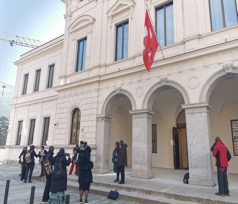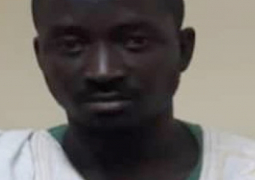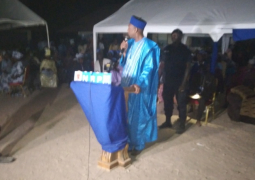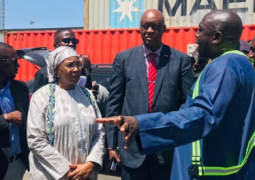
Ngum broke down as he told the court he was protesting electoral reforms on April 14, 2016, when he was arrested by Gambian police and tortured by National Intelligence Agency (NIA) officials.
In April 2016, a rare protest broke out in The Gambia while the country's former President and 22-year dictator, Yahya Jammeh, was traveling. The protest was led by a member of the opposition UDP—Ebrima Solo Sandeng—who was beaten to death in state custody. The event set off a series of protests and the arrests of over 30 party members, including party leader Ousainu Darboe.
On the first day of protests, Sandeng was arrested with at least 13 people—including Ngum, and taken to NIA, where they were brutally tortured, leading to Sandeng’s death. At least five other people involved in the protests have died since 2017. Their relatives attributed their deaths to the torture they endured at the NIA.
Ngum took the Swiss court into the NIA complex, describing the abhorrent conditions, and emotional and physical torture meted against him and others.
“They stripped me naked and took me to a room at the NIA,” Ngum, who was 29 years old at the time, said. Ngum told the court that Tamba Masireh, an NIA official found responsible by the High Court in Banjul for the torture of detainees, said they were going to kill him.
“The Junglers came. They beat me until I could not hear myself crying. They later threw me on the grass in an open courtyard. That was where I regained consciousness,” Ngum said. Ngum said he was electrocuted on his genitals. The protesters were sentenced to a 3-year jail term, but Ngum and several others could not appear in court for two weeks due to injuries caused by torture.
“They did not want the court to see me in that condition. That was why I was allowed to see a doctor,” he said. “They told us not to wear our clothes with which we were tortured. They bought us new clothes,” he said.
Madi Ceesay, a lawmaker whose son Ebrima Ceesay was tortured and died shortly after, and Fatoumata Sandeng, the daughter of Solo Sandeng, who died in state custody, sat in tears in the courtroom. Fatoumatta Jawara and Fatoumatta Camara, two torture victims expected to testify before the court, buried their heads in their hands and wiped their tears.
Sonko’s ‘responsibility’
Sonko served as police chief under ex-President Jammeh from 2005 to 2006. In the latter part of 2006, he was appointed minister for interior, a position he held from November 2006 to February 2012 and from May 2012 to September 2016.
Arrested in January 2017, the Swiss Attorney General’s office, along with 10 plaintiffs from Gambia, is accusing Sonko of torture, murder, false imprisonment, rape, and deprivation of liberty, allegedly perpetrated against Gambians during Jammeh’s rule.
The Swiss prosecutors are trying to prove Sonko’s responsibility for torture through his participation in various investigation panels as inspector general or for ordering or abetting abuse as interior minister.
Ngum placed Sonko on the panel that oversaw his torture at the NIA and at the paramilitary barracks, where they were processed before being taken to the NIA.
“The police were under the command of Ousman Sonko, and he was present on the panel. And Sonko was there when I was asking for water to drink. It was refused,” said Ngum. He also accused Sonko and the jailed former head of the NIA, Yankuba Badgie, of ordering his transfer from police custody to the NIA, where he and others were tortured. Sonko denies all wrongdoing.
(Badgie and four former members of the NIA implicated in the torture of the protesters and the killing of Sandeng were sentenced to death by a High Court in Banjul in July 2022.)
This was a collaboration with New Narratives as part of the West Africa Justice Reporting Project.





